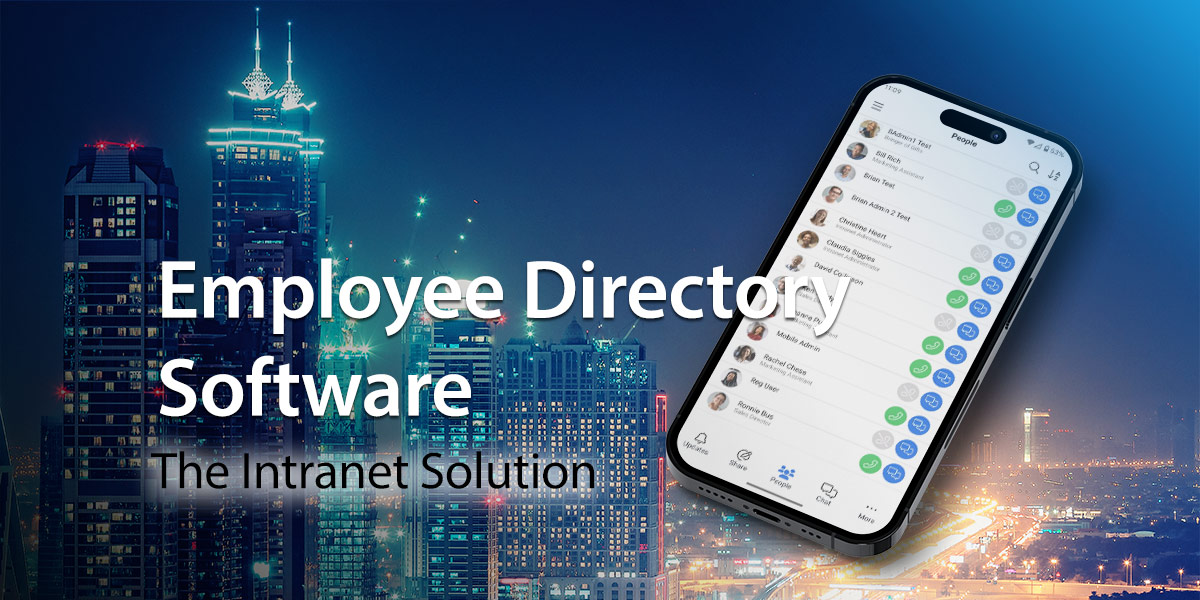What started as a pandemic-enforced shift has become standard practice: Fully remote and partly remote working are here to stay. According to Upwork, 32.6 million Americans will work remotely by 2025. While many employers adapted on the hoof, two years post-pandemic and it’s clear that a work-from-home policy is not just good practice. It’s a necessity.
Remote work policies provide employees working remotely with clear guidelines, ensuring employer and worker are on the same page. A telecommuting policy sets out what is expected of remote workers, their legal rights, how their performance will be measured, and what support they can expect. It also protects company interests by ensuring remote employees are productive and understand cybersecurity risks.
Today’s post is essential reading for any company wanting to formalize home working arrangements. We take you through all you need to know in six simple steps. Also included is a sample remote work policy. You can use the template to develop a customized policy that is perfect for your organization.
What Is A Work From Home Policy?
It’s a formal remote work agreement between employer and employee. It takes the guesswork out of working remotely by setting out responsibilities and expectations for work-from-home employees.
Here are the essential elements to include in your remote work agreement:
- How and when employees can work from home, including eligibility criteria and the approval process
- Team communication expectations
- Work hours
- How to resolve technical difficulties at home and details of help desks and support
- Necessary equipment to work from home effectively
- Required data security measures
- Support available for the home office, like help with electricity and internet bills
- Guidelines on productivity
Remote Work Policy Benefits
Why bother with a policy now if you have operated informal remote work arrangements since the pandemic? There are several benefits to having a formal remote work policy. And the main one is that it manages expectations. Miscommunication and poor productivity are less likely with a home policy template. Let’s take a closer look at all the benefits.
Benefits For Employers
A remote work policy template helps businesses manage the risks of home working. It ensures remote employees remain productive without being constantly watched by managers.
It also protects the company from an expensive and damaging data breach. Workers have the knowledge and tools to safeguard sensitive information and reduce cybersecurity risks.
Work-from-home policies will also boost your recruitment and retention efforts. According to Buffer, a whopping 98 percent of employees want to be partly or fully remote. A remote work policy widens the talent pool and raises your brand as an employer of choice.
Another advantage is that a policy helps preserve the mental wellbeing of remote employees. Employees benefit from clear guidelines to mitigate the risk of burnout.
Reduced costs in maintaining expensive office spaces are also welcome spinoffs of a work-from-home policy.
Benefits For Remote Employees
The advantages of remote work for employees are well-documented. No commuting, better work-life balance, and greater flexibility top the list of benefits for the remote employee.
A remote work policy provides remote employees with clarity over what to expect. It offers general guidelines on how to perform job duties when working remotely. And it describes the best way to set up a remote workspace.
Furthermore, productivity standards are clear. And additional resources like technical support and equipment or help with home office costs are identified.
What Should Be Included in Your Remote Work Policy?
We’ll flesh out those essential elements we identified earlier as we take you through the steps to create your home policy.
Be sure to include the remote work policy in your employee handbook so everyone knows the score.
Step 1: Outline The Objectives
Every effective policy starts with a short statement specifying its purpose. The first step is to explain your objectives and who the policy is aimed at.
You should define remote work in your company, as there are dozens of variations. Some businesses are fully remote, while others allow employees to work from home sometimes. Or your company policy may enable workers to work from home only for a certain number of days each month or year. You can use this section to explain what remote work means to your company.
Step 2: Eligible Positions And Employees
The next step involves identifying who is eligible to request remote working. You must decide whether the policy covers all workers, including new hires. Some businesses require employees to have worked with the company for a minimum period before becoming eligible.
Furthermore, not all roles can be performed remotely. For example, it may be appropriate for customer-facing staff to be in the office for a certain number of days each week. Maintenance workers often need to be on-site to perform their job duties. And the security risks for roles that deal with confidential information may be too significant for sustained home working.
Employees may also have to demonstrate they have the hardware, software, and a stable internet connection necessary to work remotely.
Step 3: Remote Work Expectations
This section is your opportunity to set clear expectations upfront. Doing so eliminates any confusion and sets the remote worker up for success.
Here are the headline issues to address:
Availability And Responsiveness
Some employers allow remote employees to set their hours within a specific window. For example, remote workers must be available eight hours daily between 7am and 7pm. Many companies put core hours from, say, 10am to 2pm when everyone is expected to be online. Every company is unique. And much depends on the nature of your business. However, the critical point here is to allow for some flexibility and make it crystal clear.
Next, it’s time for you to set out your expectations on response times to emails or IM pings. And be sure to take account of different time zones and workloads. Some managers set a time frame of 1-2 hours to respond to critical emails or DMs. Others prefer to be less specific and say as soon as possible.
Communications
It’s also helpful to create some guidelines on communications. What tools are available to remote team members? Most organizations use a combination of instant messaging, email, and video conferencing platforms for virtual meetings.
Guidelines help the remote worker understand when it’s appropriate to instant message, email, or set up a video call. Instant messaging platforms are ideal for continuous communication during the working day, one-off questions, or getting queries resolved quickly. Emails are more appropriate for complex and less urgent issues.
Team meetings may require screen sharing and face-to-face interaction. Decide what the process is for virtual meetings. For example, do you expect team members to have their cameras on?
Social Relationships And Reducing Isolation
Social isolation is the number one challenge for remote work staff. According to Zippia’s recent study, 70 percent of remote employees felt left out of the workplace. And 50 percent were lonely at least once a week. Employers must take steps to reduce isolation and maintain social connections for work-from-home employees.
Many businesses got creative in maintaining social relationships during the pandemic, so there are plenty of best practices out there. Check out our post Watercooler Conversation: The Essential Guide For Hybrid Workplaces for tips and advice.
Support With Technical Difficulties
Technical difficulties are more challenging in the context of remote work. There’s no on-site support or knowledgeable colleagues to help. Your remote work policy should specify what tech support systems are in place to keep work-from-home employees productive at all times.
You may already have an IT help desk that remote workers can access by phone and IM. Or consider contracting with external IT support services that specialize in remote assistance.
At the very least, schedule regular software updates and systems maintenance. Have a plan in place for data recovery. And underscore to employees the importance of routine data backup processes.
Step 4: Security
Remote working presents significant data security risks. Your work-from-home policy must set out employees’ security responsibilities. Ensure your workers are aware of the risks and create best practice guidance.
For example, avoiding public Wi-Fi networks, locking computer screens, using strong passwords, and multi-factor authentication effectively reduce security risks.
Step 5: Remote Tools, Equipment And Supplies
The remote work policy should outline what tools and supplies are available for employees. Specify what you will provide and what employees must purchase themselves.
Some companies provide hardware and software but expect employees to pay for their own internet and phone services. Others will reimburse employees for home office expenses. Either way, be upfront to avoid misunderstandings.
Step 6: Requesting Work From Home Arrangements – The Approvals Process
Finally, the remote work policy should set out the approvals process for those wanting to work from home.
Usually, the employee makes a request in writing. Following a discussion with the line manager on the mechanics and productivity expectations, approval is confirmed in a formal agreement. Each agreement should be specific to the individual worker and outline the responsibilities of both parties.
Work From Home Policy PDF
You can use the following sample remote work policy to create an agreement relevant to your business purposes. The policy template is available to download as a PDF.
Remote Work Policy For [Insert Company Name]
Policy effective date: [Insert date]
Objectives
This work-from-home policy describes guidelines and procedures for employees working remotely, either fully or partially. It applies to any employee working from a location outside the normal workplace.
Scope
Remote work may be a permanent or temporary arrangement. And it allows employees to perform their duties all or some of the time from a different location.
Eligibility Criteria
To qualify for remote working, an employee must:
- Have reliable internet access
- Demonstrate the capability to perform job duties with minimal supervision. You must also possess strong time management and organizational abilities.
- Have a tenure of [insert applicable period] with the company.* Note: this criteria is optional
Position Eligibility
Employees are eligible for remote work if their job can be satisfactorily performed remotely. Roles requiring in-person interaction with customers or others may not qualify because of the nature of the tasks and business needs.
Expectations For Remote Employees
When working from home, remote employees are expected to meet the following requirements:
- Employees will perform the same tasks and assignments as they would in the office
- Remote workers must meet all deadlines, maintain high-quality standards, and report daily to their line manager on performance and tasks completed.
- The line manager will agree on the number of remote work days per week and working hours. [Insert any expectation around work overtime if appropriate]
- Remote workers are expected to be available between [insert core hours] for collaborations with coworkers and team meetings
- Employees working from home are required to use our preferred communication channels. [Insert details, a brief description of when to use each platform, and your response times]
- Remote employees should consider occupational safety and health in their home workspaces. Employees must have their home office approved by the line manager to ensure it meets best practice standards.
- Work-from-home employees must comply with all company policies. They still receive all company benefits, including health insurance and worker compensation.
Security Measures
Securing company data and customer information is a priority. Staff who work from home must use a virtual private network for secure encrypted connections. They should follow company cybersecurity guidelines and install anti-virus software. Virtual private networks must be secured with robust and frequently changed passwords.
Remote workers should not use public WiFi for work purposes. They must keep work laptops or devices private from family members.
Any confidential documents must be kept in a locked filing cabinet.
Equipment And Work From Home Expenses
[When it comes to equipment, choose from the following two options:]
- The company will provide remote employees with the following equipment: [list any equipment such as laptops, mobile devices, headsets, and printers]. Equipment owned by [insert company name] may only be used for work purposes.
- The company will reimburse remote employees for tools and equipment essential to their work. [List the equipment and tools]. Employees must request reimbursement from their line manager. The work-from-home policy also allows staff to use their personal electronic devices for work with the line manager’s written approval.
[Regarding home office expenses, select from the following two options:]
- The company is not responsible for work-from-home expenses, including electricity, heat, internet, and phone services.
- The company provides an allowance of [insert details] for home office-related expenses.
Technical Support
Work-from-home team members can access tech support [insert details, for example, 24/7, 9 to 5]. Remote employees can get help by contacting [insert details like call a help desk, submit an IM, send an email].
Social Relationships
[Insert company name] recognizes that remote work can be isolating. We will take steps to support social relationships for remote employees with regular team meetings, virtual get-togethers, and online social events. Workers are also encouraged to use the #timeout channel on team chat to connect with colleagues informally.
Approvals Process
Remote work arrangements are approved case-by-case. Requests should made in writing to the line manager. Approval decisions are final.
Informal work-from-home arrangements can be made for short-term projects or special requests like caring for a sick relative or child. The line manager must agree to these casual arrangements.
[Insert company name] reserves the right to withdraw work-from-home arrangements at anytime.
Contact
If you want more information or to discuss the remote work policy, please contact [insert name and details].
Work From Home Policy Template: Final Thoughts
There’s no doubt working from home is here to stay. A formal work-from-home policy safeguards your company’s interests. Employee and employer responsibilities are crystal clear, eliminating any misunderstandings or confusion.
In short, it’s a win-win for the employer and employee. Workers enjoy greater flexibility and a better work-life balance free from the burden of commuting. And employers benefit from reduced costs, increased productivity, and a happier workforce. Moreover, it widens the talent pool and powers up your recruitment and retention efforts.
You can use our home policy sample to inspire you and create a work-from-home policy fit for the modern workplace.
About MyHub
We are a leading supplier of cloud-based intranet platforms. Our all-in-one solution supports remote working in businesses worldwide. Under one virtual roof are all the tools needed for successful remote working. Find out more with a free demo or a no-obligation 14-day trial.





